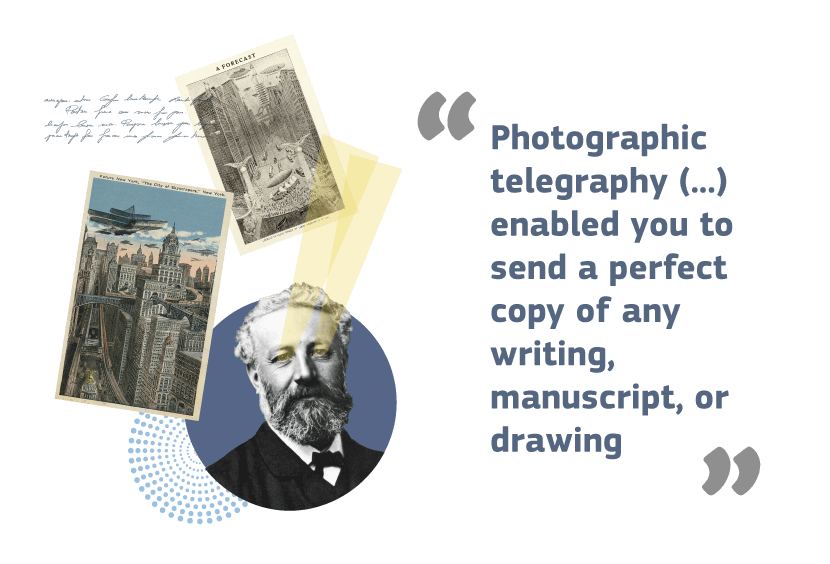The great social transformation and technological innovations of the 19th century gave rise to various futuristic narratives that we now call science fiction books. The most significant of these do not merely map out the future but also offer a critique of the present, while among the topics they explore are the technologies of human communication.

Jules Verne’s Dystopian Paris
In Paris in the 20th Century, written in 1863, Jules Verne describes, in a melancholic tone, a civilization dominated by business, and the worship of money and science. In this world, technological progress in telecommunications is rapid and far-reaching. Verne envisions a global communication network that allows the instant transmission of information and images—essentially predicting the creation of a global village. “New improvements allowed the sender to communicate directly with the recipient; (…) Moreover, photographic telegraphy (…) enabled you to send a perfect copy of any writing, manuscript, or drawing over great distances and to sign bills of exchange or contracts from a thousand leagues away.
And so, the telegraphic network covered the entire surface of the continents and the depths of the seas. America was only a second away from Europe.”

Looking Backward
The 19th-century science fiction book with the greatest cultural impact is Looking Backward 2000–1887 by Edward Bellamy, published in 1888 in the United States. The work, a best-seller in its time, describes a socialist utopia. The protagonist vanishes from 1880s Boston and, after a catatonic sleep, awakens in the post-capitalist society of the year 2000. What strikes him—aside from the abolition of class struggle and wage labor—is the musical telephone: a telephone device found in every home that plays music according to the subscriber’s tastes. “There are music halls in the city specially adapted to various styles of music. These are connected by telephone to the homes of citizens who are willing to pay a small subscription fee; believe me, everyone without exception gladly pays for it.”
In this vision, the author is essentially predicting radio, at a time when the telephone was still regarded as a professional tool. It marks a historic moment, as it is the first time telecommunications are associated with entertainment.

The Last Day of the Year 1999
Finally, the trend of futuristic storytelling also reached Greece. In the Ladies’ Almanac (Ημερολόγιον των Κυριών) of 1889, a text appeared that described the imaginary world of the 20th century on the eve of the third millennium. Among other things, it included a prediction of the videophone or television:
“But the telephone would be an incomplete invention if it did not also include the ability to see at a distance. (…) Tomorrow, we who are here in Italy will be able to see everything happening in New York, while at the same time, through the telephone, we will hear their voices. (…) Then the bond between all people will be completed and perfected, and all of humanity will be united into one great family.”
A common thread in all futuristic narratives at the end of the 19th century is the optimism that telecommunications would promote the unity of humanity. Just a few years later, however, the First World War would break out.


